Africa is home to some of the world’s most beautiful and amazing wonders of the natural world.
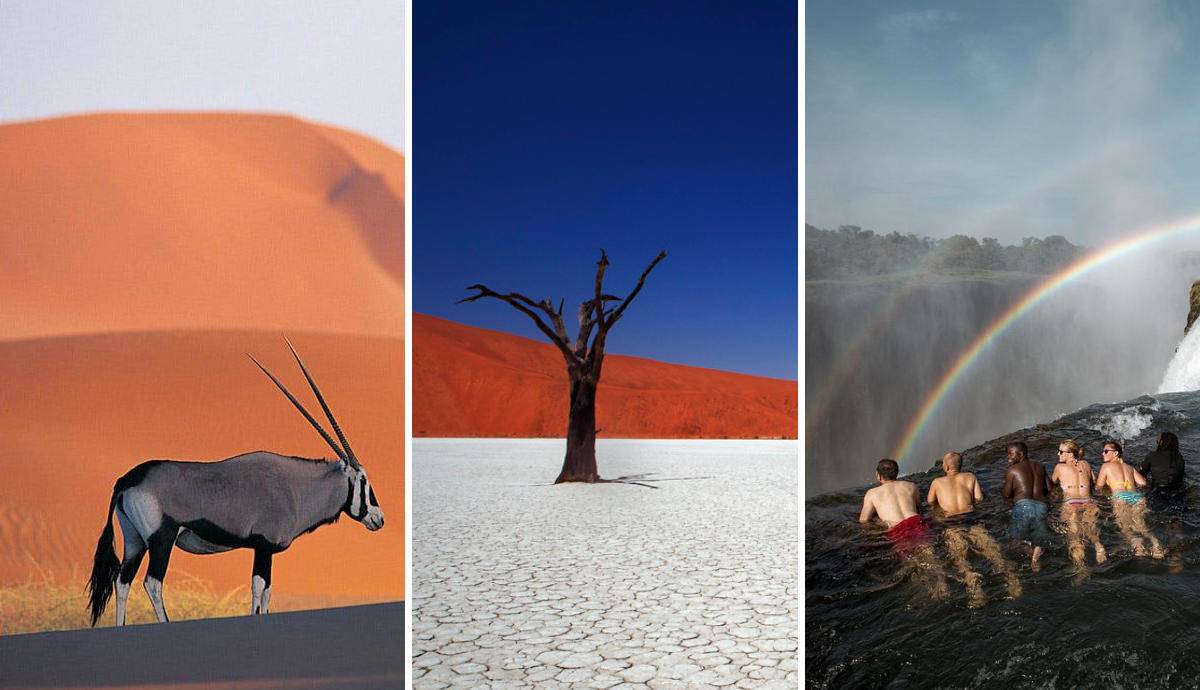
After Asia, Africa is the second-most populous and the second-largest continent. Throughout its 11.7 million square miles (30.3 million kilometers2), the continent has a vast variety of climatic and ecological zones with unique flora and fauna that decorate the spectacular landscapes. From Table Mountain in the far south to the Nile Delta in the far north, from the deserts of the Kalahari, the Namib, and the Sahara, to the wetlands and thick rainforests of the Congo, Africa is home to some of the most beautiful and awe-inspiring scenery. Some of these places are on tourists’ bucket lists, and some are hidden gems, off the beaten track, and difficult to get to. Some of these wonders are officially recognized as one of the 7 Natural Wonders of Africa, and some are simply spectacular in their own right.
Here are 7 of the most beautiful places in Africa.
1. Mount Kilimanjaro, Tanzania
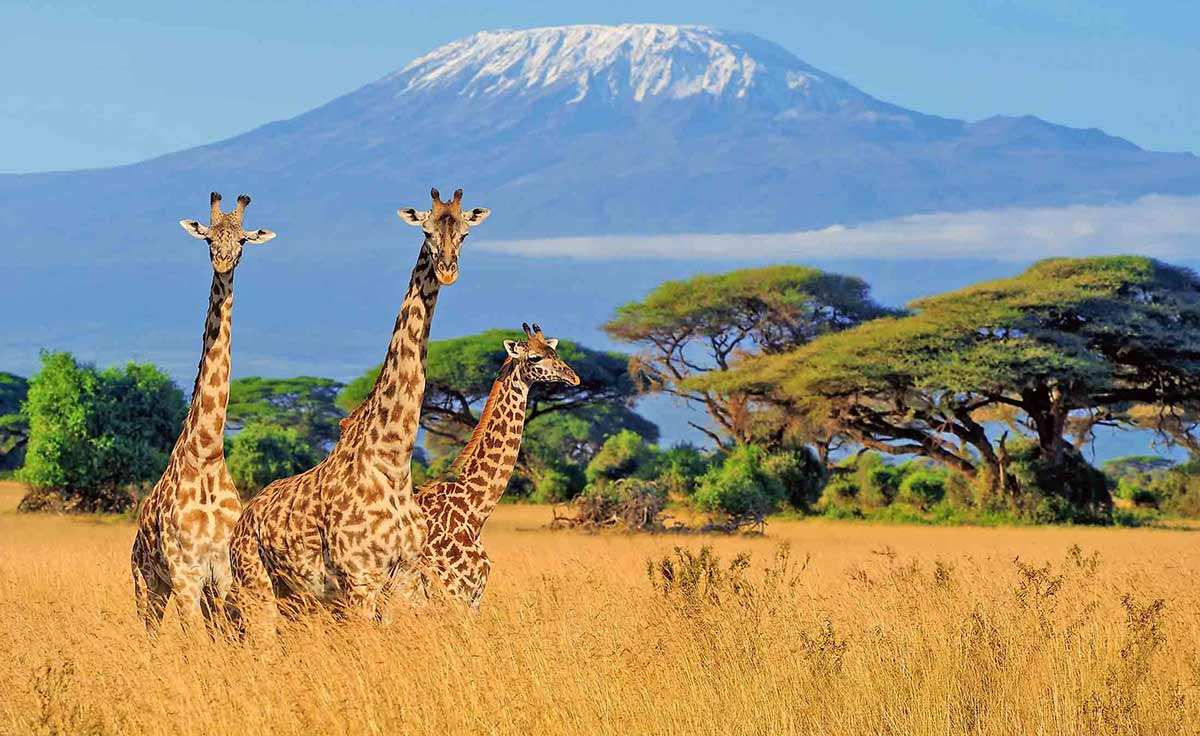
At 19,341 feet (5,895 meters) above sea level, Mount Kilimanjaro, a dormant volcano, is Africa’s highest mountain and the highest free-standing mountain in the world. Nobody knows exactly where the name comes from or what it means, but to many, the mountain is simply referred to as “Kili.” Kilimanjaro actually comprises three summits – Kibo, Mawenzi, and Shira. Kibo is the one that gets all the photographic attention and forms the iconic backdrop to many photographs of Mount Kilimanjaro National Park.
Its gentle slopes mean that people can hike to the top. However, the lack of difficult climbing does not change the effects of rapid altitude changes, and it is common to develop altitude sickness while hiking to the top. From the base to the summit, Kilimanjaro contains many vegetation zones, and a variety of plants and animals can be seen which inhabit the zones.
Kilimanjaro’s snow-capped peak and distinctive volcanic shape make the mountain look somewhat like the famous Mount Fuji in Japan (but with a flatter top). Kilimanjaro’s snowcap, however, is getting smaller every year, and the peak is expected to be free from snow sometime between 2025 and 2035.
2. Victoria Falls
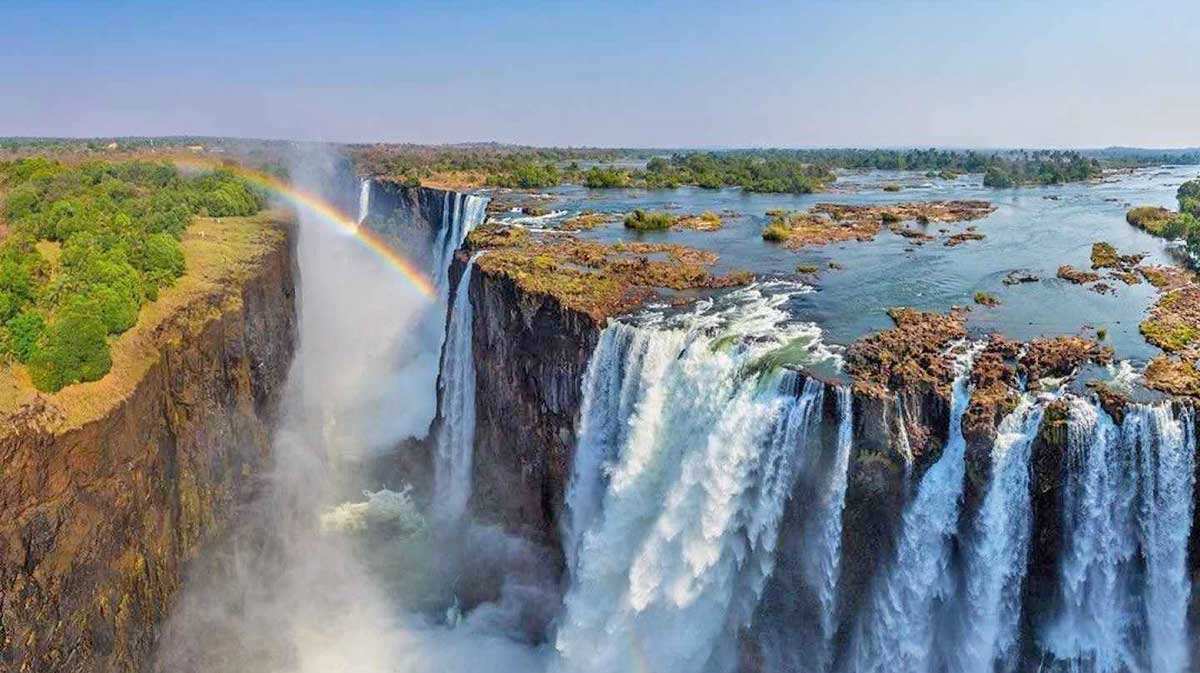
Located on the border of Zambia and Zimbabwe, the Zambezi River cascades into one of the most spectacular waterfalls in the world. “Vic” Falls became known to Europeans after the famed explorer David Livingstone discovered it in 1855, although, presumably, it was known to Africans long before David Livingstone was around.
Known in the Lozi language as Mosi-oa-Tunya, “Thundering Smoke,” and in Tonga as Shungu Namutitima, “Boiling Water,” the waterfalls are a major tourist attraction that draws approximately one million visitors each year.
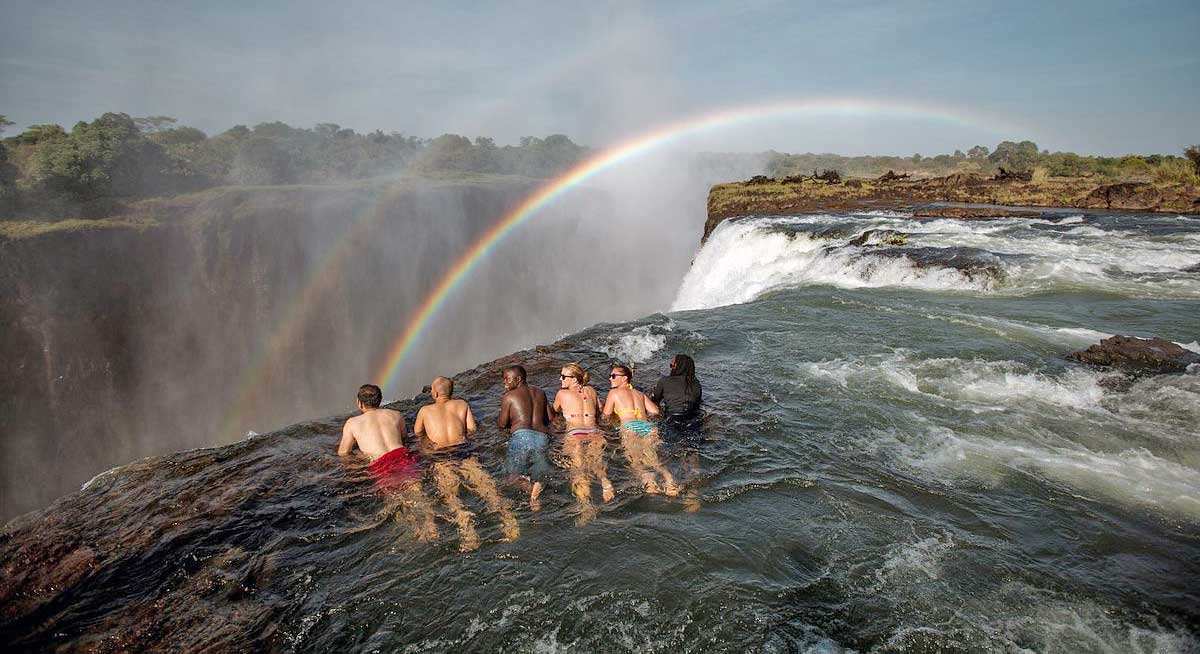
One of the main attractions for those more adventurous is a dip in the Devil’s Pool right on the edge of the waterfall. The view from the pool is exhilarating as 110 million gallons (500 million liters) of water rush past every minute to disappear into the thundering spray 328 feet (100 meters) below.
3. The Nile
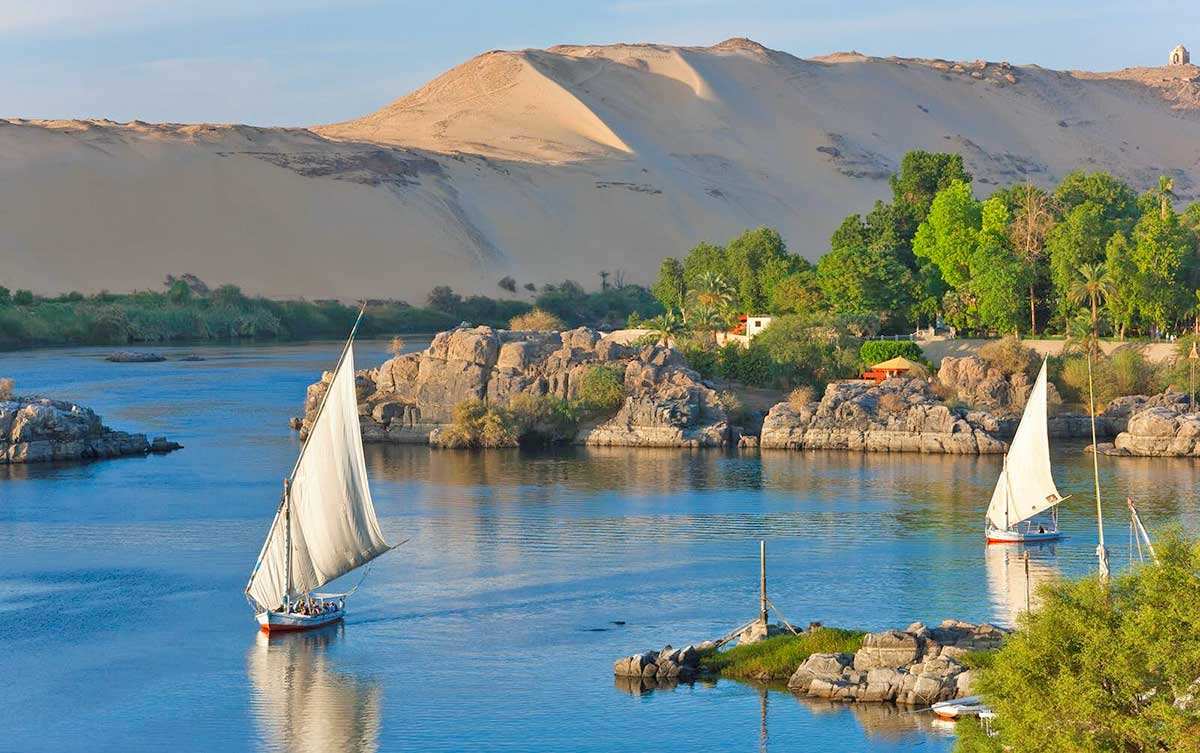
At 4,132 miles (6,650 kilometers) long, the Nile is the longest river in the world and travels through many African countries. Rising from several places south of the equator, it flows north and drains into the Mediterranean Sea. The Egyptians referred to the river as Ar or Aur from the Coptic language meaning “black” in reference to the black sediment the river leaves behind after flooding. In Ancient Egyptian, the black sediment gave its name to the Egyptian Kingdom, which they called “Kemet” (kem meaning “black”).
As a river that flows from south to north, it crosses many climatic zones. The waters are home to huge numbers of animals, such as crocodiles, hippopotamuses, and hundreds of bird species. In the south, tropical rainforest gives way to grassland before encountering the scorching desert of the Sahara.
The river also supports a large diversity of people who rely on its waters for sustenance. From fishing to farmlands, the Nile provides valuable food, while the numerous dams that punctuate its course provide power and economic stability vital to countries such as South Sudan, Sudan, and Egypt.
In Egypt, the Nile represents virtually the entire reason for the country’s existence. Thus, 95% of the country’s population of 102 million people live on the banks of the river or in the delta. Apart from the vital industries centered around the Nile, it is also the center of a huge tourism industry, and tourists can take cruises to see the spectacular landscape, the wild animals, and the ancient temples and towns built thousands of years ago by the world’s second-oldest civilization.
4. Table Mountain, South Africa
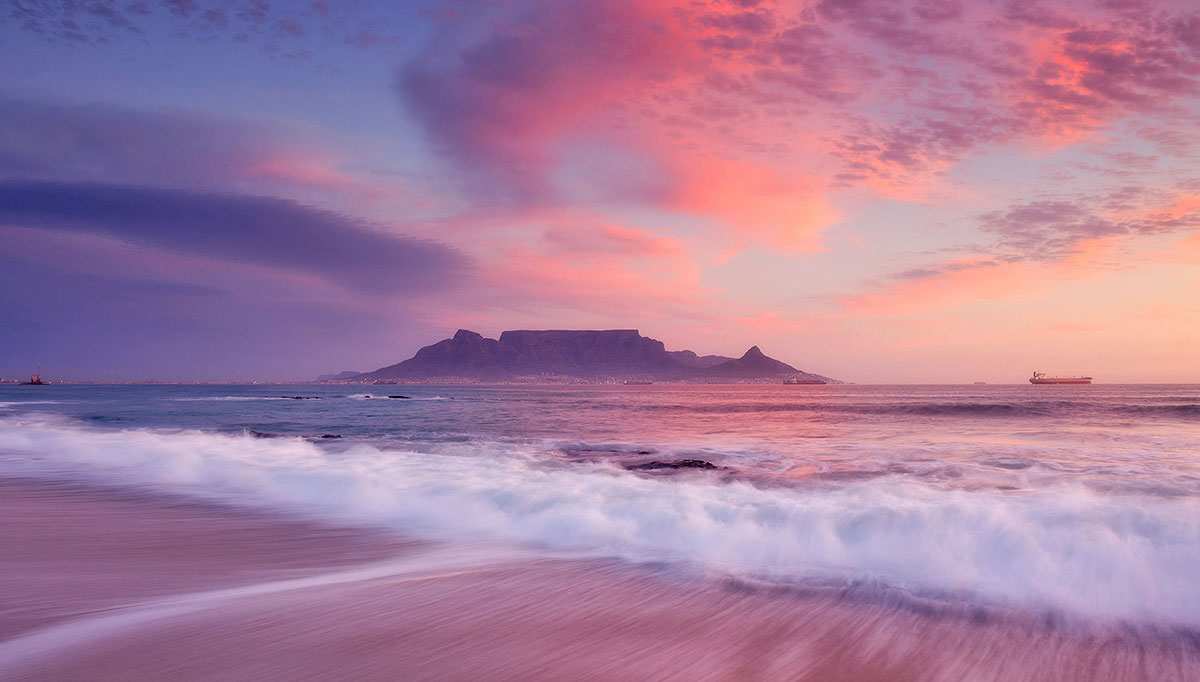
At the southern tip of Africa, towering over the city of Cape Town, is the flat-topped sandstone feature known as Table Mountain. It is one of the 7 Wonders of the Natural World, and it forms the basis of Table Mountain National Park, the most visited national park in South Africa, attracting over 4 million visitors every year.
Packed into a relatively small area and almost completely surrounded by the urban sprawl of Cape Town, Table Mountain is home to an incredible 8,200 plant species, most of them endemic to the region. The mountain is also home to many animal species, such as mongooses, caracals, Cape foxes, and the ubiquitous dassies (rock hyraxes) that greet tourists as they reach the ascent via cable car.
The summit is 3,563 feet (1,086 meters) above sea level and runs approximately three miles (two kilometers) from side to side. From this vantage point, spectacular views of the city can be seen below, along with the neighboring peaks of Devil’s Peak, Lion’s Head, and Signal Hill, which, together with Table Mountain form a U-shaped bowl in which the Cape Town Central Business district sits.
5. Ngorongoro Crater/Caldera, Tanzania

Situated in Tanzania, the Ngorongoro Crater is the world’s largest inactive, intact, and unfilled volcanic caldera and covers an area of 100 square miles (260 square kilometers). Although it is called a crater, it is, more precisely, a caldera formed after a massive volcano exploded and collapsed two million years ago.
The bowl of the crater is rich with life, and like many African attractions, the Ngorongoro Crater is home to an abundance of wildlife, including hippopotamuses, hyenas, leopards, lions, African buffalo, wildebeests, giraffes, and zebras, to name a few. Of note is the presence of the critically endangered black rhino.
The crater and the surrounding lands are also home to many indigenous Maasai people who have lived there for centuries and are in danger of being evicted by the government of Tanzania, which claims that Maasai overgrazing is posing a threat to conservation.
Whatever the case may be, the crater is a huge Garden of Eden in Africa and draws significant numbers of tourists.
6. The Okavango, Botswana
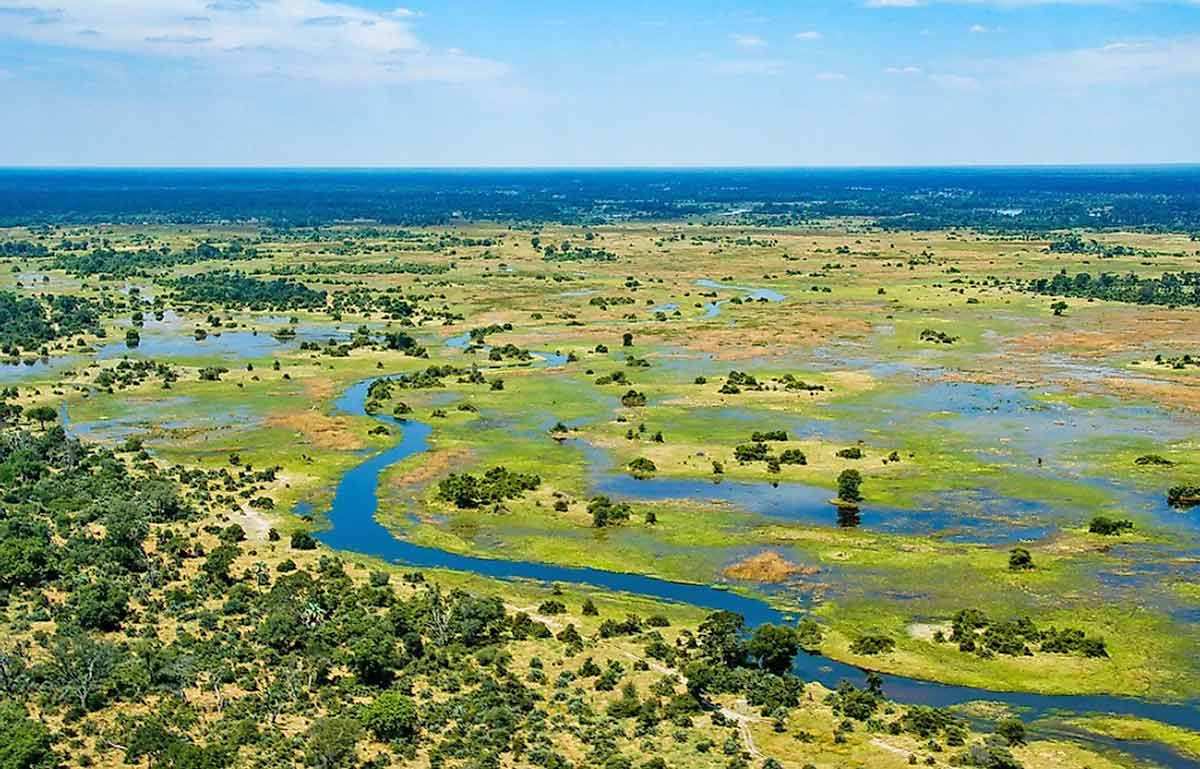
The Okavango Delta is a seasonally flooded marshland that acts like a massive oasis in the middle of a harsh, dry desert. It is an inland delta, which is to say it does not flow into the sea. Its waters flow into the sands of the Kalahari Desert instead.
One of the oddities that makes the Okavango so special is that it floods during the dry season, and as a result, the surrounding flora has synchronized its biological cycles with the rise and fall of the Okavango waters instead of with the seasons.
The delta is constantly evolving as floods come and go, shifting the geology and geography of this UNESCO World Heritage Site. Islands, lakes, lagoons, floodplains, river banks, and channels are all constantly shifting, along with the plants that grow there. From swamps to riparian forests to dry deciduous woodlands, the Okavango Delta is home to 1,061 different plants.
Naturally, the delta is home to a vast array of wildlife that makes it a popular tourist attraction. There are 89 species of fish, 64 species of reptiles, 482 species of birds, and 130 species of mammals, including white and black rhinos, cheetahs, elephants, and lions.
7. The Namib, Namibia
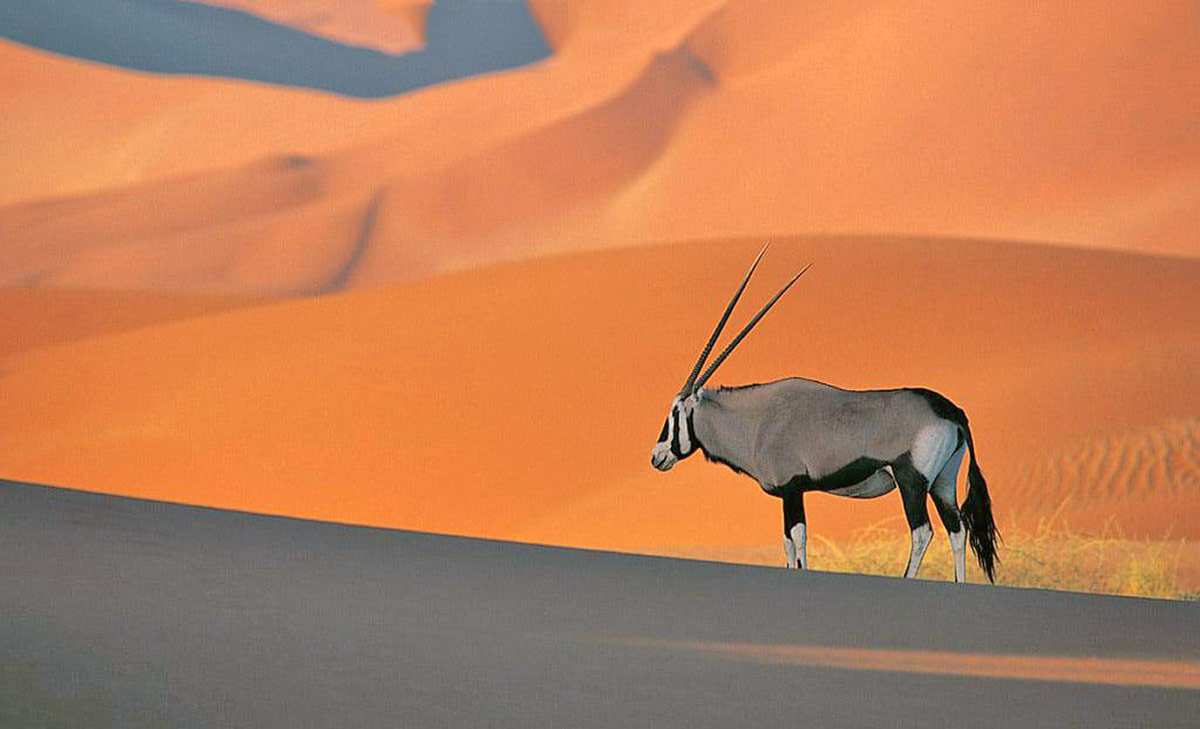
Bounded by the Kalahari desert to its east and the Atlantic Ocean to the west, the Namib Desert runs the entire length of Namibia’s coastline, reaching the southern coastline of Angola and the northern coastline of South Africa.
Touted as the oldest desert in the world (the Atacama in Peru and Chile also claims this title), the Namib is home to some of the largest dunes in the world. Some of them reach heights of almost a thousand feet (300 meters) and run for 20 miles (32 kilometers). The Namib dune sea is complex, and the patterns of the dunes are still a poorly understood mystery to geologists who have been studying the Namib for decades.
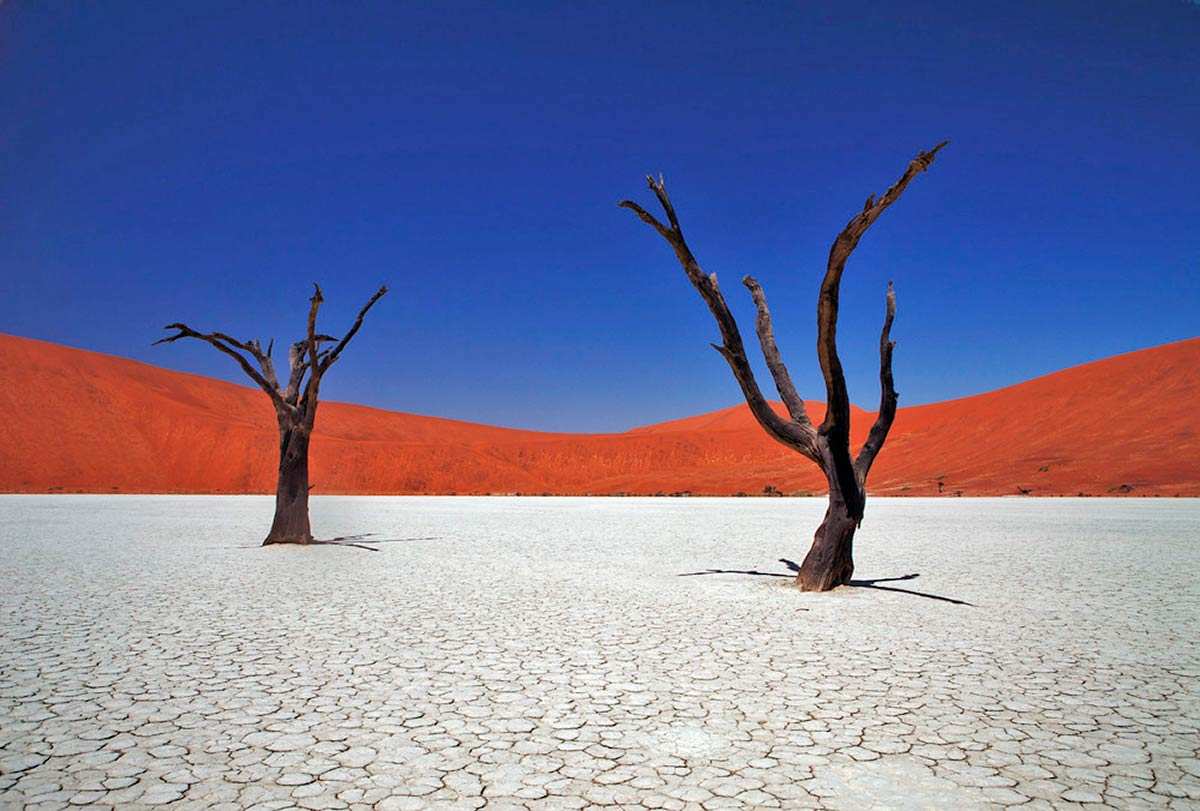
Daily morning fog makes traversing parts of the coastline difficult, and a section of the coastline called the Skeleton Coast is so named for all the shipwrecks dotting beaches.
The arid Namib contains a surprising amount of unique life. Elephants, zebras, African wild dogs, gemsbok, kudu, giraffes, and other animals all make their home in the Namib, regularly traversing the routes between waterholes.
In many parts of the Namib, the high iron content causes the sand to be red and gives the desert a distinctively otherworldly feel, especially when combined with the strange forms of the flora such as welwitschia plants and quiver trees.
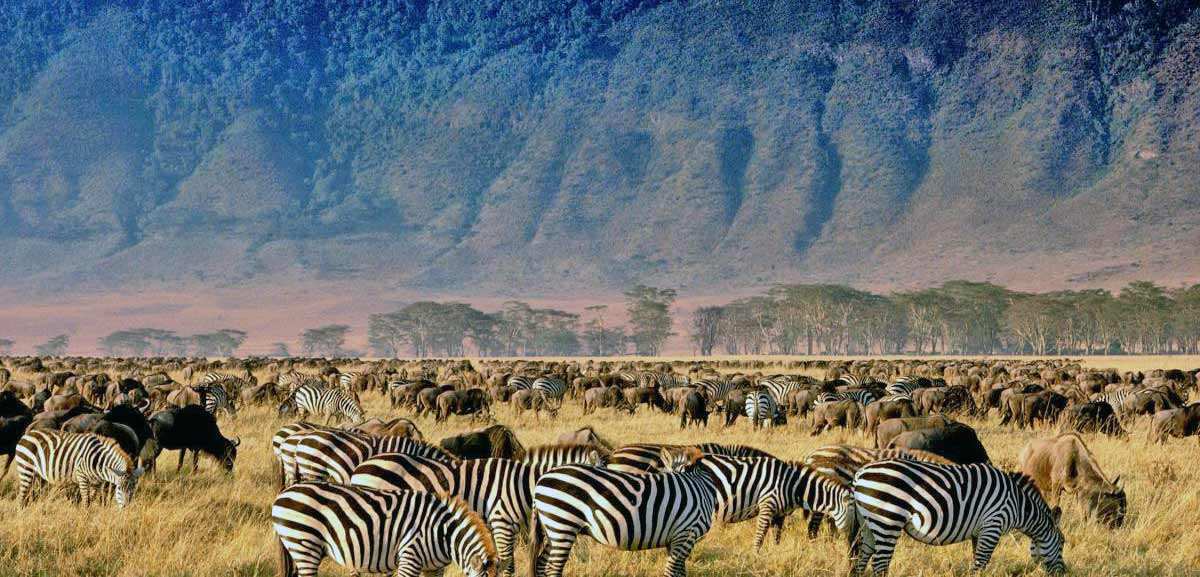
Africa is a massive continent filled with diverse geography with an immensely rich selection of flora and fauna. Beautiful rivers wend their way through rich landscapes, crashing with thunderous applause as their waters reach sheer cliffs. Dramatic mountains pierce the bright blue African skies and provide incredible backdrops to distinctively African scenes.
It is a magnificent and fascinating place filled with wonders that attract adventurous tourists from all over the world.





